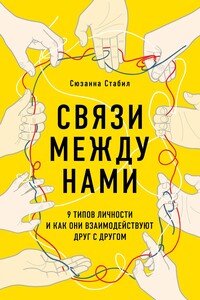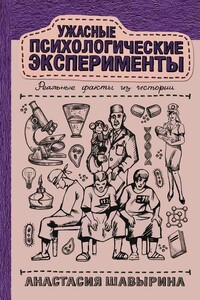Дифференциальная психология. Индивидуальные и групповые различия в поведении - [262]
status in a midwestern community: I. Ten-year-old children. /. educ. Psychol, 1944, 35, 357–368.
43. Havighurst, R. J., and Taba, Hilda. Adolescent character and personality. N.
Y.: Wiley, 1949.
44. Heuyer, G., et al. Le niveau intellectuel des enfants d'age scolaire. Inst.
nat. d" etudes demographiques: Travaux et documents, Cahier 13, 1950.
45. Himmelweit, Hilde T. Socio-economic background and personality. Int.
soc. Sci. Bull, 1955, 7, 29–35.
46. Hirsch, N. D. M. An experimental study of the East Kentucky mountaineers.
Genet. Psychol. Monogr., 1928, 3, 183–244.
47. Hollingshead, A. B. Elmtown 's youth: the impact of social classes on adolescents.
N. Y.: Wiley, 1949.
48. Husen, Т. (Concerning the probiem of selective migration on the basis of
intellectual differences) Studia Psychol. Paedagog., Lund, 1948 2, 30–63.
49. Janke, L. L., and Havighurst, R. J. Relations between ability and social
status in a midwestern community: II. Sixteen-year-old boys and girls. / educ. Psychol, 1945, 36, 499–509.
50. Jones, A. W. Life, liberty, and property. Philadelphia: Lippincott, 1941.
51. Jones, H. E., Conrad, H. S., and Blanchard, M. B. Environmental handicap
in mental test perfofmance. Univer. Calif. Publ. Psychol, 1932 5, No. 3, 63–99.
52. Jordan, A. M. Parental occupation and children's intelligence scores. /.
appl. Psychol, 1933, 17, 103–119.
53. Kinsey, A. C, et al. Sexual behavior in the human male. Philadelphia:
Saunders, 1948.
54. Kinsey, A. C, et al. Sexual behavior in the human female. Philadelphia:
Saunders, 1953.
55. Klineberg, O. A study of psychological differences between «racial» and national
group in Europe. Arch. Psychol, 1931, No. 132.
56. Klineberg, O. Negro intelligence and selective migration. N.Y.: Columbia
Univer. Press, 1935.
57. Klineberg, O. The intelligence of migrants. Amer. Sociol. Rev., 1938, 3,
218-224.
58. Leahy, Alice M. The measurement of urban environment. Minneapolis, Minn.:
Univer. Minn. Press, 1936.
59. Lehman, H. C, and Witty, P. A. The psychology of play activities. N. Y.:
Barnes, 1927.
60. Lichtenstein, M. and Bron, A. W. Intelligence and achievement of children
in a delinquency area. J.juv. Res., 1938, 22, 1—25.
61. Livesay, Т. М. Relation of economic status to "intelligence" and to racial
derivation of high school seniors in Hawaii. Amer. J. Psychol, 1944, 57, 77–82.
62. Loevinger, Jane. Intelligence as related to socio-economic factors. 39>h
Yearb., Nat. Soc. Stud. Educ, 1940, Part I, 159–210.
63. Lynd, R. S., and Lynd, Helen M. Middletown. N/Y/: Harcourt, Brace,
1929.
64. Lynd, R. S., and Lynd, Helen M. Middletown in transition. N. Y.: Harcourt,
Brace, 1937.
65. Maas, H. S. Some social class differences in the family systems and group
relation of pre- and early adolescents. Child Develpm., 1951, 22, 145–152.
66. MacDjnald, Margherita, McGuire, Carson, and Havighurst, R. J. Leisure
activities and the socioeconomic status of children. Amer. J. Sociol, 1949, 54, 505–519.
67. Mailer, J. В. Mental ability and its relation to physical health and social
economic status. Psychol. Clinic, 1933, 22, 101–107.
68. Mauldin, W. P. Selective migration from small towns. Amer. sociol. Rev.,
1940, 5, 748–758.
69. McArthur, C. Personality differences between middle and upper classes. /.
abnorm. soc. Psychol, 1955, 50, 247–254.
70. McCarthy, Dorothea. Language development in children. In L. Carmichael
(ed.). Manual of child psychology. (2>nd Ed.) N. Y.: Wiley, 1954, Pp. 492–630.
71. McConnell, J. W. The evolution of social classes. Washington, D. C: Amer.
Coun. Pub. Affairs, 1942.
72. McDonald, H. The social distribution of intelligence in the Isle of Wight.
Brit. J. Psychol, 1925, 16, 123–129.
73. McNemar, Q. The revision of the Stanford-Binet Scale. Boston. Houghton
Mifflin, 1942.
74. Milner, Esther. Effects of sex role and social status on the early adolescent
personality. Genet. Psychol. Monogr., 1949, 40, 231–325.
75. Milner, Esther. A study of the relationships between reading readiness in
grade one school children and patterns of parent-child interaction. Child Develpm., 1951, 22, 95—112.
76. Miner, J. B. Intelligence in the United States: a survey-with conclusions for
manpower utilization in education and employment. N. Y.: Springer, 1956.
77. Neff, W. S. Socio-economic status intelligence: a critical survey. Psychol.
Bull, 1938, 35, 727–757.
78. Phillips, E. L. Intellectual and personality factors associated with social
class attitudes among junior high school children. /. genet. Psychol, 1950, 77, 61–72.
79. Pieter, J. (Intelligence quotient and environment.) Kwart. Psychol, 1939,
11, 265–322.
80. Pope, B. Socio-economic contrasts in children's peer culture prestige
values. Genet. Psychol. Monogr., 1953, 48, 157–220.
81. Preda, G., and Mates, E. (The relation between children's intelligence
and father's occupation). Bui Soc. Psihol Med. Sibiu, 1939, 6, 33–39.
82. Pressey, L. W. The influence of inadtquate schooling and poor environment
upon results with tests of intelligence. /. appl. Psychol, 1920, 4, 91–96.
83. Pressey, S. L., and Thomas, J. B. A study of country children in a good and

Каждого из нас время от времени посещает желание заглянуть в голову другого человека. О чем он думает? Чего хочет? Как ко мне относится? Книга Сюзанны Стабил – путеводитель по девяти типам личности и их отношениям друг с другом. Она учит понимать людей, максимально непохожих на нас, и разбираться в своих собственных мотивах, страхах и ограничениях. В основе авторской системы лежит концепция эннеаграммы – модели, которая описывает девять типов личности и связи между ними. А еще – помогает определить свой собственный тип и при необходимости трансформировать его в желаемый.

Эта книга для тех, кто устал от бесконечной гонки за теплое место под солнцем, за лучший кусок хлеба, за более высокую ступеньку на карьерной лестнице, кто понял, что богатство и власть не приносят долгожданного счастья. Всё, пора приземлиться, вспомнить, что жизнь одна и поэтому должна приносить только удовольствие! И это правильно: добро пожаловать в мир философии наслаждения, радости и пофигизма – Акуна Матата! Она доказывает: когда ты не «паришься», живешь в свое удовольствие, радуешься жизни, любишь себя, людей и весь мир, то становишься счастливчиком, обласканным богиней Фортуной.

Почему психически больные радуются от страдания? Почему иногда и здоровый человек чувствует приятные ощущения при физической или психологической боли? На эти вопросы вы здесь сможете получить ответ. А самое главное, увидите практические примеры проявления мазохизма и садизма у людей, которым проводился психоанализ.

Эта книга – про нарушение пищевого поведения, лишний вес и глубинные причины его появления. Но вы не найдете в ней диет и советов ограничить себя в еде.Здесь даны практические инструменты «психологической стройности», представлены истории клиентов и личный опыт автора.Автор книги – психолог со стажем. Она знает, что чувствует женщина, которая мечтает похудеть, изнуряет себя диетами и походами в зал. Она сама прошла этот путь.Книга заменит вам десятки визитов в кабинет психолога.

Эксперименты позволили человеку обосноваться и понять свое место в этом мире. Мы достигли всего опытным путем, путем проб и ошибок, дорогой разочарований и невероятных успехов. Эксперимент затрагивает взрослых и детей, людей и животных. Он следует за нами везде, во всех областях нашего существования, на всех этапах истории. Изготовление орудий труда, приручение диких животных, поиск съедобных растений или путешествия к неизведанным землям — не эксперимент ли для древнего человека? Но если окружающий мир изведан, что остается изучать? Верно, нашу психику.

Книга « Давайте начнем с кофе» в легкой и уютной атмосфере кофепития, предлагает поразмышлять, о существующих в мире течениях, обещающих улучшить качество жизни. Позволяет пересмотреть все сферы жизни и дает конкретные инструменты – психологические техники, которыми можно скорректировать то, что нуждается в изменении. Книга будет интересна людям, интересующимся способами улучшения жизни, работая над собой самостоятельно. Специалистам книга станет полезной наличием практических техник.